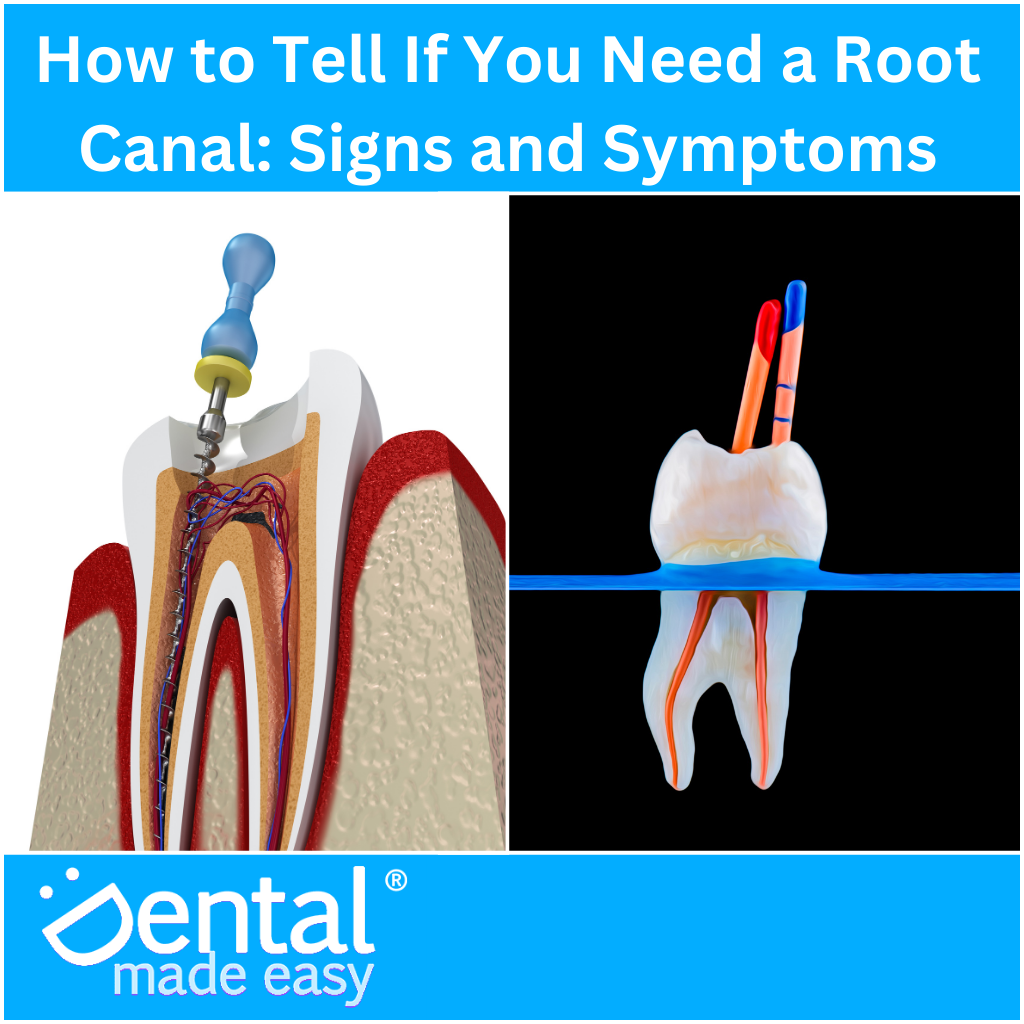Root canal treatment is a common dental procedure aimed at saving a tooth that is severely infected or decayed. Understanding the basics of root canals can help individuals recognize the signs that may indicate the need for this treatment. It’s important not to ignore these signs as an untreated tooth infection can lead to more serious complications, such as abscess formation or spreading of the infection to other parts of the body. In this article we will discuss How to Tell If You Need a Root Canal and what Signs and Symptoms to look for.
If you experience any of these symptoms discussed in this article it’s crucial to consult a dentist.
Key Indicators That You Might Need a Root Canal Procedure
If you are experiencing any of these symptoms, it’s essential to seek prompt evaluation. A thorough examination will help determine if a root canal procedure is necessary to save your affected tooth and alleviate your discomfort.
- Toothache is a common sign that there may be an issue with the dental pulp. If you find yourself experiencing intense pain in a specific tooth that doesn’t go away, it could be a sign that a root canal is necessary.
- Sensitivity to hot or cold temperatures can also be an indicator of potential problems with the dental pulp. If you feel sharp pain or discomfort when consuming hot or cold foods and beverages, it’s important to consult with a dentist to determine if a root canal is needed.
- Swollen gums around a specific tooth can signal an infection in the dental pulp. The swelling may be accompanied by tenderness and redness in the affected area.
- Darkening of the tooth can occur when the nerve tissue inside the tooth is damaged. If you notice discoloration in a single tooth compared to others, it could indicate an issue requiring root canal treatment.
- Pain when chewing or biting down on food can be another indication of underlying dental problems that may necessitate a root canal procedure. Discomfort while eating could suggest damage to the inner structures of the affected tooth.
These symptoms often indicate that the inner pulp of the tooth is infected or damaged.
Diagnosing the Need for a Root Canal: What Your Dentist Looks For
Diagnosing the need for a root canal is a crucial aspect of dental care, as it helps in addressing underlying issues and preventing further complications. During a dental exam, your dentist carefully looks for specific signs that indicate the necessity of a root canal procedure.
Some of the key indicators that your dentist may look for are:
- Visible damage or decay on the tooth’s surface
- Swelling around the affected tooth
- A pimple on the gums near the tooth
This can be observed during a visual examination or through dental x-rays, which provide detailed images of the tooth and its roots. X-rays can reveal signs of infection or inflammation in the pulp, which may require root canal treatment.
Common Misconceptions About Root Canals Debunked
Root canals often get a bad rap due to myths and misconceptions about the procedure. Let’s debunk some of the most common ones to help you better understand the reality behind root canal treatment.
Myth 1: Root Canals are Painful
One of the biggest myths about root canals is that they are really painful. In reality, modern dental techniques and anesthesia make root canal procedures relatively painless. Most patients report feeling more discomfort from the toothache that necessitated the root canal than from the procedure itself.
Myth 2: Root Canals Cause Illness
There is a long-standing myth that root canals can lead to systemic illness or other health problems. This misconception originated from outdated research that has since been debunked. Root canal treatment is a safe and effective way to save an infected or damaged tooth without compromising your overall health.
Myth 3: Extraction is Better Than a Root Canal
Some people believe that tooth extraction might be a better option than undergoing a root canal procedure. However, saving your natural tooth through a root canal has numerous benefits, including maintaining proper chewing function, preserving jaw bone structure, and preventing neighboring teeth from shifting out of place. Extractions may lead to additional dental issues in the future.
By dispelling these common myths about root canals, we hope to alleviate any fears or concerns you may have about this essential dental procedure.
Don’t Ignore the Signs – Early Detection and Treatment Can Save Your Tooth!
Root canal procedures are designed to remove infected pulp from inside the tooth and alleviate pain while saving the natural tooth structure. Don’t ignore any of the signs covered in this article- early detection and timely treatment can make a significant difference in preserving your smile and maintaining good oral health for years to come.
By addressing these issues early on, you can prevent the spread of infection and potentially avoid more extensive dental procedures. Remember, your oral health is an essential part of your well-being.
If you are experiencing any of these symptoms please contact Dental Made Easy today. We have locations in Brooklyn, Forest Hills, Astoria and New Hyde Park.


